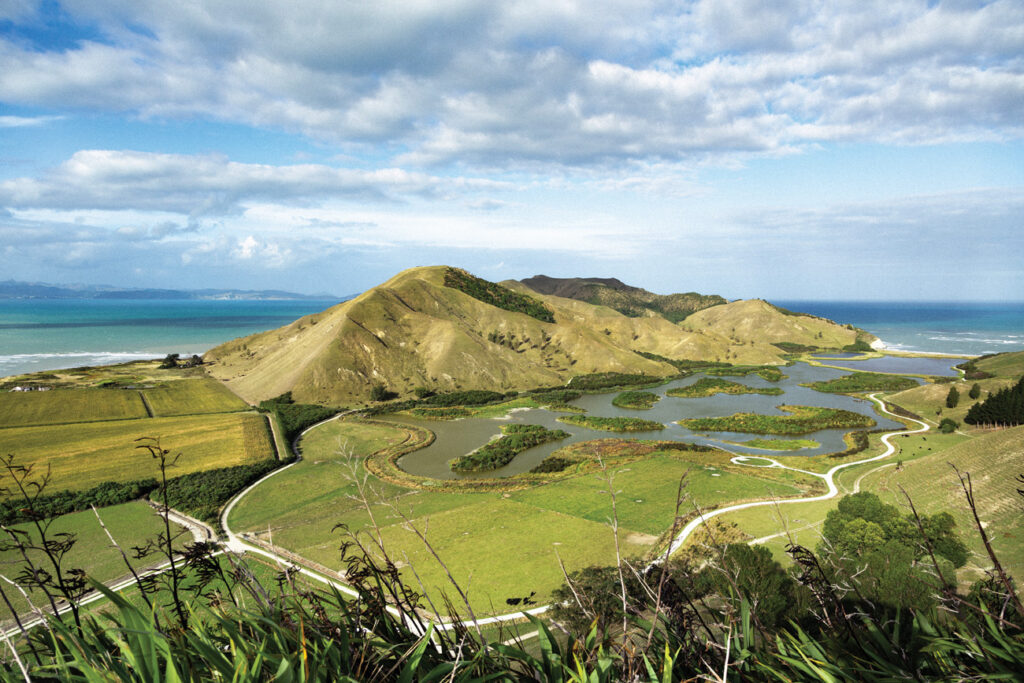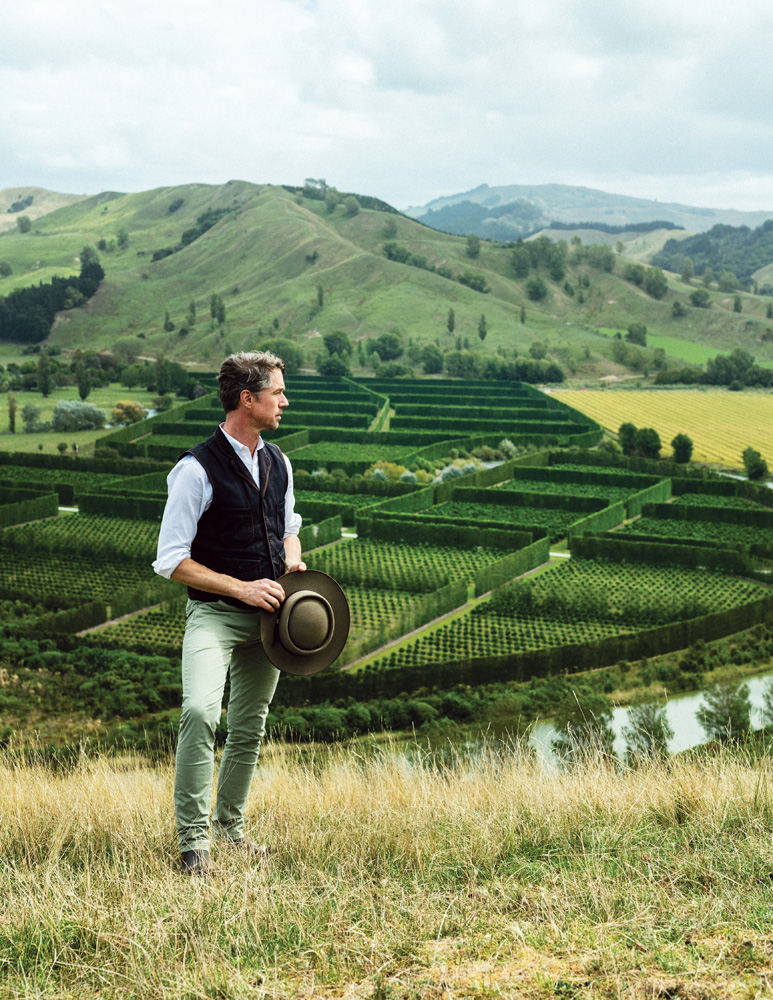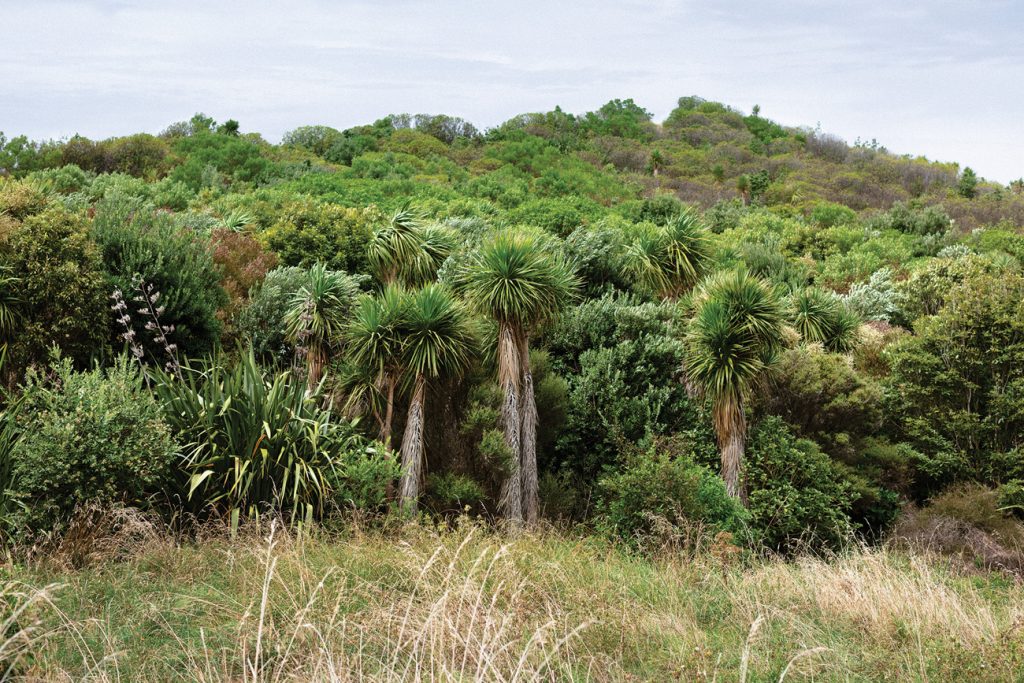Beauty & Bounty
Thomas Woltz says he’s not a visionary but his output contradicts him. His landscape architecture firm has helped to transform tens of thousands of acres of degraded agricultural land into rich ecological communities that pulse with life.
“I cannot see cultivation of the earth and cultivation of the spirit as separate at all. The idea of stewardship and care over land is one of the most important portals to happiness. What I want to do with our work is to care with intent.”
Thomas Woltz is a landscape architect, architect and principal of Nelson Byrd Woltz Landscape Architects (NBW). NBW has designed hundreds of parks, farms, residential gardens and public memorials and has a list of awards a few kilometres long. We are meeting at Orongo Station, a vast 3000-acre property on New Zealand’s rugged east coast. Thomas and his team have carefully stewarded this landscape for the last 17 years, transforming it into an internationally regarded example of innovative conservation agriculture. The complexity of the project is reflected in the scale of the on-the-ground team, which includes farm manager, Kim Dodgshun, and conservation biologist and ornithologist, Steve Sawyer.
We arrive on a Saturday morning and immediately head off for a tour – six of us squeezed into a farm buggy, weaving our way from one side of the property to the next. Thomas is our driver and tour leader, zipping with great energy and enthusiasm from hill to hill, gate to gate.
The scale of the project is stunning. I’ve never before seen a designed landscape of such size and contextual, artistic and environmental consideration. Agriculture, conservation and cultural history are interwoven to create a landscape that speaks of the site and its stories, using design as a framework. It’s beautiful, productive, restorative and reverential.
The ethos of care is inherent in NBW’s process. “We aspire to approach land with grace and dignity. We start by listening,” Thomas says. Each time NBW begins a new conservation agriculture project, they engage a local ecologist and spend a week on-site with both designers and ecologists doing biodiversity surveys. “We quantify reptiles, amphibians, birds, bats, all living creatures, including plants, on the site and then work backwards.” In the case of Orongo Station, their discussions with Steve Sawyer have lasted for years, not weeks.
Armed with this information, design is then used as a framework to respect and support local ecologies, address human needs and desires, communicate the stories of the land and foster beauty. Care is taken to consider each of these outcomes equally.
“This is one of the most exciting places to bring somebody,” Thomas says as we stand on the side of a hill looking out over a citrus orchard. “The composition is painterly, like a Frederic Church or Capability Brown landscape, but unlike those artists whose primary goal was aesthetic beauty, our aesthetic beauty grows from the geometry of a productive landscape married with the ecological landscape. The interweaving of those two things is a really important balance to strike.”
It’s a view that clearly illustrates Thomas and his team’s thoughtful and layered approach to landscape. The citrus orchard has been designed in service to production – addressing practical considerations such as turning circles, planting distances and wind protection – but it’s laid out like an artistic composition. The river winding through the landscape has been fenced off and planted with native vegetation as a safe haven for native fauna, the road through the orchards has been designed to focus awareness on the historic Ngai Tāmanuhiri cemetery mounds in the distance and a previously degraded wetland has been revegetated. It’s an example of the power of design in creating a framework for land stewardship, production and beauty.
“I think the future of conservation really lies in discovering these hybrid ecologies with agriculture. We’re going to have to keep farming, but in ways that have much less of an irreversible footprint on land. I think it’s really important work to be doing.”
We look out over another masterpiece – a vast 75-acre reconstructed wetland that serves a number of important ecological functions as well as being a bold, graphic, living artwork. The area had originally been wetlands but previous owners had drained it for cattle grazing. “We invited water back into this landscape, but in a way that will read as a composition, as a giant painting.”
The needs of birds were the driving force of the project. Each of the islands has been designed in consultation with Steve Sawyer to ensure they are the right size and topography for the threatened local bird species. Ribbons of revegetation lead up from the water’s edge to the tops of surrounding hills so the birds can forage safely.
On the property’s northern tip, the NBW team, in consultation with conservation biologists, horticulturalists and Māori officials, have installed a 2.4-metre fence around an 86-acre area and planted over 50 000 trees to provide a refuge for communities of native birds, reptiles and invertebrates. “These headlands are a very important way-finding device for migratory birds. The team has created an incredible habitat for them.”
The seabirds, particularly the petrels and shearwaters, have a symbiotic relationship with the tuatara, the last survivor of an order of reptiles that thrived during the age of the dinosaurs and are extinct on the New Zealand mainland. The tuatara lays its eggs in the birds’ burrows. In 2012, 65 tuataras were introduced into the enclosure, with approval from Māori officials. We spot some of the little reptiles as we walk towards the headland. They’re incredible creatures, like mini-dinosaurs. It’s the first time Thomas has seen them in the enclosure. For the first time in our visit he’s lost for words.
We continue to wind our way around the cliff face as the sun sinks into the ocean, until we reach a limestone headland awash in birds. We sit quietly and watch as gannets, fluttering shearwaters and grey-faced petrels fly in to roost. “These birds have returned to this headland for the first time in a century. And they’re safe and they’re reproducing,” Thomas says, with obvious emotion.
It’s dark by the time we make our way back to the farmhouse. A sense of humility and awe envelops us as we tramp through the bush. The six of us are connected to the vastness of the landscape in different ways and by different threads, but we share a sense of reverence and care.
“I feel like the luckiest kid on the planet. Everyone asks me why I work so hard, but I don’t think of it that way,” Thomas says. “I am suddenly very conscious of my own expiration date. Not in a morbid way, but in a motivating way. If I have access to doing projects like this, I want to get them done, or at least started. Because this goes way beyond me or the property owner or my firm. It’s really an ethos about how to address land.”
Excerpt taken from The Planthunter: Truth, Beauty, Chaos and Plants by Georgina Reid with photography by Daniel Shipp published by Thames & Hudson.







